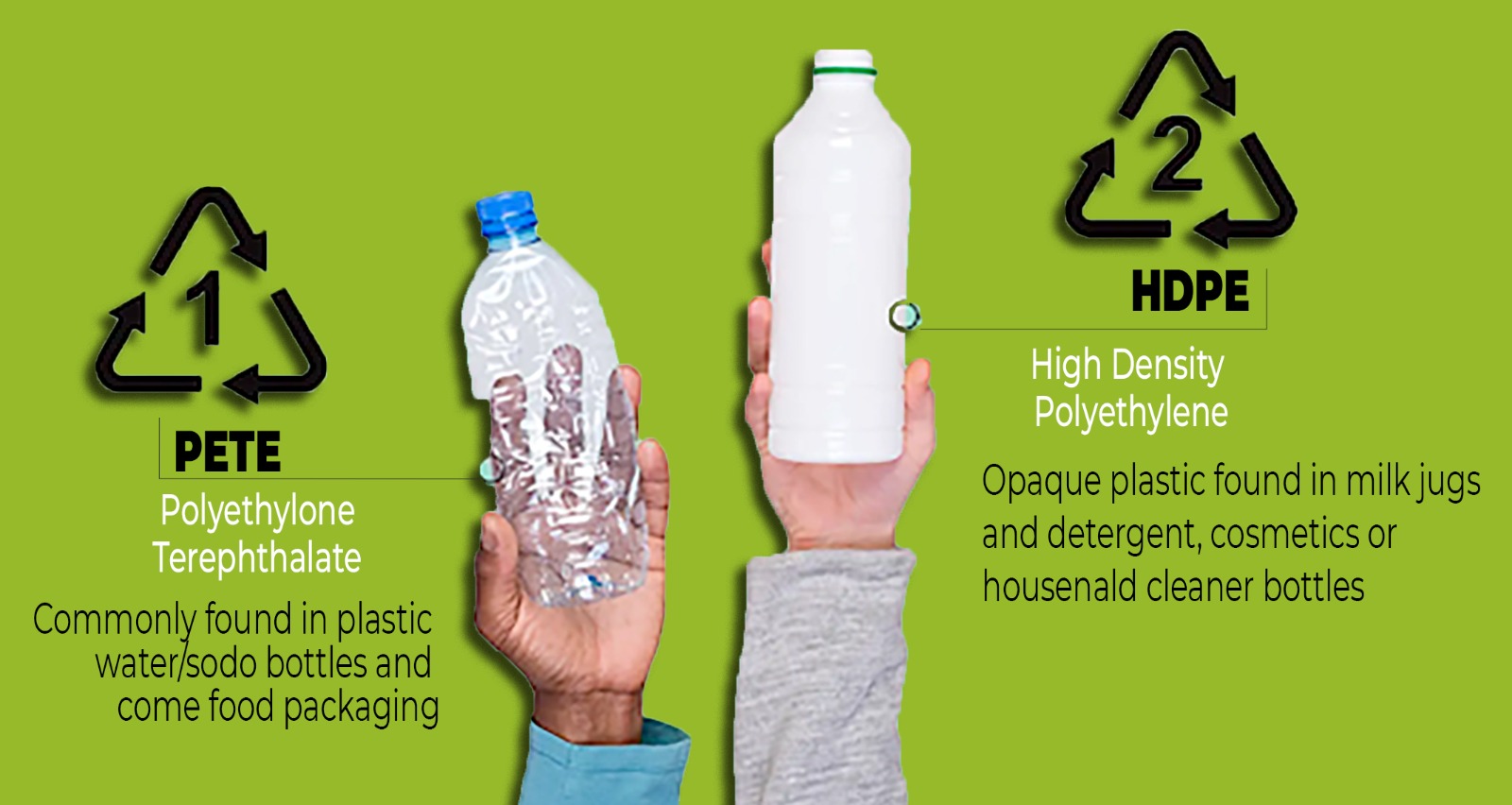PET vs HDPE: Unlocking Circular Value in Packaging
September 15, 2025

“Not only are plastics polluting our oceans and waterways and killing marine life – it’s in all of us and we can’t escape consuming plastics.” Marco Lambertini – Director General WWF (International)
Details
PET vs HDPE:
Unlocking Circular Value in Packaging
“Not only are plastics polluting our oceans and waterways and killing marine life – it’s in all of us and we can’t escape consuming plastics.”
Marco Lambertini – Director General WWF (International)
The Packaging Industry
The packaging industry across the world is at the crossroads. Governments are becoming stricter; consumers are becoming more outspoken on waste reduction and multinational companies are going bold in promises to incorporate recycled material. In this regard, there are two polymers that are predominant in rigid bottles and containers: polyethylene terephthalate (PET) and high-density polyethylene (HDPE). They are alike in being recyclable, they are alike in their usage, yet they are parting ways. PET is also making infiltration in the transparent and lightweight segment whereas HDPE is at the core of chemical, detergent, and opaque product segments. The result of this competition will have an impact not only on the packaging portfolios but also on the economics of the recycling process and the pace of conversion to the circular economy.
Shifting Market Dynamics
Recent market valuations underscore PET’s momentum. The global PET packaging market reached USD 74 billion in 2024, driven by sustained demand in food, beverages, and personal care. PET already accounts for more than 63 percent of the global bottle market, leaving HDPE and other polymers to share the remainder. By contrast, the recycled HDPE market was valued at USD 18 billion in 2024, reflecting its continued importance in durable goods and industrial packaging.
Recycling Performance and Circularity Momentum
Recycling rates are a decisive factor in determining which material is best positioned for circularity. In the United States, PET bottles achieved a recycling rate of 37.8 percent in 2023, up from 29 percent the year before—the highest level in over a decade. The share of recycled PET (rPET) content in bottles also rose to 16.2 percent, reflecting brand commitments to circular design. In comparison, HDPE bottle recycling has struggled, with rates of around 27 percent in 2022 and a downward trajectory from earlier years. Historically, PET and HDPE were comparable, with recycling rates close to 29 percent in 2018, but PET has since pulled ahead, supported by deposit-return schemes and greater end-market demand for rPET.
Performance Trade-offs Between PET and HDPE
The technical advantages of PET are one of the reasons why it has become popular. PET bottles can be designed in a thinner version without affecting the performance and the resin consumption, transportation expenses, and emissions are minimized. Its transparency is attractive to brand owners, as they would like consumers to view the product contained inside, as well as the barrier properties increase the shelf life, which is an advantage in food and beverage market. All these advantages have earned PET as the substance of choice in beverage, water and clear FMCG products.
HDPE, nevertheless, still has considerable strong benefits. It has a high degree of chemical resistance and is, therefore, essential in packing harsh liquids like detergents, household cleaners and motor oils. It keeps light sensitive products such as milk and some drugs safe because it is opaque and remains tough which makes it long lasting. Furthermore, recycled HDPE market is quite developed, especially on usage in non-food packaging and industrial products.
Implications for a Circular Economy
The increase in the use of PET in some of its categories demonstrates how change at the system level hastens circularity. PET bottles with monomaterial caps and labels attached to the bottle tops are simpler to recycle and produce high-quality rPET. Increased demand of rPET is an economic incentive to collect and recycle, and both processes strengthen the recycling cycle. How policy can ensure recovery rates are brought to levels far higher than those of the United States can be seen in regulatory frameworks like deposit-return schemes in Europe.
At the same time, there is development of better washing and extrusion technology that can enable rHDPE to be of higher quality standards. This makes HDPE still a significant component in packaging portfolios, especially in areas where it has functional advantages that still cannot be matched. The strategic imperative to the brand owners, however, is not to move to substitute HDPE with PET across the board but to the development of product portfolios that can ensure sustainability and performance in a dual manner. This is because those companies that act today, by redesigning packaging to be recyclable, sourcing recycled feedstock and shaping new regulations, will be in the best position to dominate an industry where circularity is emerging to be the primary defining competitive advantage.
About NovelOPS
NovelOPS delivers customized business consulting, digital marketing, and academic advisory services with a strong focus on sustainable and inclusive growth. We specialize in restructuring consulting, strategy consulting, and operational excellence, helping organizations navigate complex transformations with confidence. At NovelOPS, we believe true business success goes together with social responsibility. By combining local insights with global expertise, we craft strategic solutions that drive long-term value. Our mission is to build adaptable, purpose-driven institutions that create real impact. Through expert guidance and collaborative partnerships, we empower clients to thrive in an ever-evolving world.
